India is the largest producer of milk in world probably due to vast population of livestock. In 2018-19, the total milk production of India was 187.7 million tonnes, accounting for approximately 20% of world’s production and per capita availability was 394 g/head/day in the same year. However, average milk produced per animal in our country is very low. This is mainly due to non-feeding of mineral mixture in routine diets of animals. Since minerals are nowhere synthesized in animal’s body, hence their supplementation in regular diet of animals is of paramount importance. Various studies have documented the positive role of mineral mixture feeding on improvement of milk yield in addition to prevention from various mineral deficiency diseases. Also the success of a dairy farm depends upon the productivity of animals, which in turn depends upon the reproductive efficiency of animals. Thus for optimum reproductive efficiency i.e for getting one calf per animal per year, minerals (both macro and micro) play crucial and significant roles. Macro minerals include calcium, phosphorus, magnesium, potassium, sodium, chlorine and sulphur, whereas micro minerals include zinc, copper, iron, manganese, cobalt, iodine and selenium. For completion of mineral requirement, various pharmaceutical companies now-a-days are producing packed mineral mixtures loaded with chelated or non-chelated minerals. However supplementation of mineral mixture depends on various factors including species, age, body condition score (BCS), stage of lactation, and reproductive parameters of animals in addition to geographical conditions of that area.
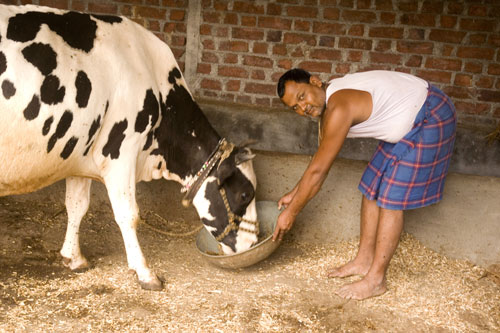
What is Area Specific Mineral Mixture (ASMM)?
In India, there is high variation in the mineral content of feed and fodder of different agro-climatic zones due to many factors viz. mineral content of soil, rainfall, soil type, cropping pattern etc. Thus there may be deficiency or surplus of a particular mineral between different agro-climatic zones, which is known as area specific. Hence there is an urgent need of development of area specific mineral mixture (ASMM) for different regions and states of the country in order to ensure supplementation of deficient minerals for optimum milk production and reproductive efficiency.
Why there is need of ASMM?
In India, supplementation of mineral mixture is not common in most of the states and regions. Wherever it is practiced, a common mineral mixture is added to feed without considering the mineral status of that area, leading to imbalances of minerals. Moreover, recommendation of a single composition based common mineral mixture for different regions of a country is questionable, as there is different requirement for different regions. An excess of a mineral in the animal body will put the animal into stress for its excretion to outside, whereas deficiency of a particular mineral may hamper production and reproduction. Hence, feeding of area specific minerals most deficient in that area avoids antagonistic effects of excess levels of other minerals and could be a more practical and cost-effective approach.
How ASMM is manufactured?
For preparation of ASMM for a particular region, first of all complete mineral profile of that area is required. For this, a mineral mapping programme jointly undertaken by National Dairy Development Board (NDDB) and various centres under the ICAR Micro-Nutrients Network Programme is being run for testing of micronutrient status of soil, water, feeds and fodder and blood samples of animals in different agro-climatic zones of India. This initial phase for the development of ASMM has already been completed in almost all the states and union territories of India. In its final report, NDDB has found that magnesium, potassium, iron, manganese and selenium are more than sufficient in most of the areas, whereas, deficiency levels of calcium, phosphorus, sulphur, sodium, copper, zinc and cobalt vary greatly within the states and their levels have been adjusted accordingly in the formulations.
For manufacturing of good quality ASMM, NDDB is providing technical assistance and technology to the dairy cooperatives for establishment of mineral mixture plants. Moreover, NDDB has also standardized the production process and plant design. A total of 31 plants have been set up till date across the country, and each having a capacity of approximately 12 tonnes of production of ASMM per day. These plants are fully controlled and automated as per the standard procedures laid down by NDDB. On the basis of its detailed survey, NDDB has provided guidelines and data for composition of ASMM for all states. After production, ASMM is sold to farmers at affordable prices throughout the country.
What are the advantages of feeding ASMM over a common mineral mixture?
- Since ASMM is prepared only after assessing the mineral profile of a particular area, thus only deficient and essential minerals are supplemented. This reduces the cost of mineral mixture.
- ASMM increases nutrient utilization, mineral bioavailability and milk production performance in dairy animals.
- ASMM increases levels of serum immunoglobulins viz. IgG, IgM and IgA conferring enhanced animal immunity against various diseases.
- ASMM increases body weight gain, BCS and puberty, and thus lowers age at first estrus.
- According to a scientific study, ASMM can increase milk yield up to 10-15% during lactation period without any adverse effect. This will increase the economic status of farmers in long run.
- ASMM also decreases the time interval of postpartum estrus and increases conception rate at first heat after calving.
- ASMM decreases the problem of skin keratinization in animals.
- As reported by a study, ASMM may increase haemoglobin content and red blood cells count of animals, thus preventing dairy animals from anemia which is common in protozoan diseases.
- ASMM may increase non-esterified fatty acids, albumin and globulins levels thereby preventing the animals from their deficiency.
- ASMM increases concentration of progesterone in dairy animals after calving.
- According to a study, it has also been reported that long term feeding of ASMM reduces the number of inseminations required per conception of animal.
What should be the characteristics of a good quality ASMM?
- The minerals in ASMM must be chosen from such a source that there should be higher bioavailability and absorption.
- While choosing the source of minerals, certain factors such as easy availability in the area, cost, stability, type of diet etc must be taken into account.
- For proper utilization of minerals in the animal tissues, their compatibility, solubility, particle size, density and chemical stability must be taken into account.
- The level of fluorine must be kept low, and in accordance with the guidelines of NDDB so as to prevent its toxicity to livestock.
- As per Bureau of Indian Standards (BIS), ASMM must not contain any ingredient of animal origin even in traces. This is in order to protect the livestock from dreadful diseases such as Mad Cow Disease or Bovine Spongiform Encephalopathy (BSE) which occurred in European countries due to feeding of animal origin ingredients to ruminants.

What are the types of commercial ASMM available for different states of India?
Today there is a huge competition between different pharmaceutical companies for development and marketing of a single composition based common mineral mixtures. However, only a limited number of companies are producing ASMM as per the guidelines of NDDB with authenticated information. In Table 1, some ASMMs produced by different companies for different regions are enlisted.
Table 1: List of ASMMs developed by different companies for different regions of country
| S.No | Name of ASMM | State / Area of recommendation | Manufacturing company / Institute |
| 1. | Chelated Samridhi | Punjab, Haryana, U.P | Carus Lab. Pvt. Ltd., Karnal |
| 2. | KALMIN ERS | Lower Gangetic region of West Bengal | ERS, NDRI |
| 3. | MINKAM-UT | U.P & Uttarakhand | IVRI, Bareilly |
| 4. | Minmix-U.A. | Uttaranchal | IVRI, Bareilly |
| 5. | Medha mineral mixture | Jharkhand | JMF Ltd. |
| 6. | Nandini, Nandimin | Karnataka | ICAR-NIANP |
| 7. | Sudha-Min | Bihar | Sudha Coop. Bihar |
| 8. | Saras Mineral Feed | Tropical zone of Rajasthan | Cattle Feed Plant, Jodhpur |
| 9. | Rohini | Jaipur | Unique Organics Ltd. |
| 10. | Sampooran mineral mixture | Gujarat | AMUL |
| 11. | Purabi Pashu Pushti | Assam | WAMUL, Assam |
| 12. | AAUVETMIN | Assam | AAU |
| 13. | TCM-MIX | Haryana | Titanic Vet, Haryana |
| 14. | GouMix | For all states | Indian Immunologicals Ltd. |
| 15. | CLIFEMIN Gold | For all states | Care Life Vet Pharma |
| 16. | Parag | UP | Uttar Pradesh Coop. |
| 17. | Keramin mineral mixture | Kerala | Kerala Feeds Ltd. |
| 18. | TANUVAS-SMART | Tamilnadu | TANUVAS |
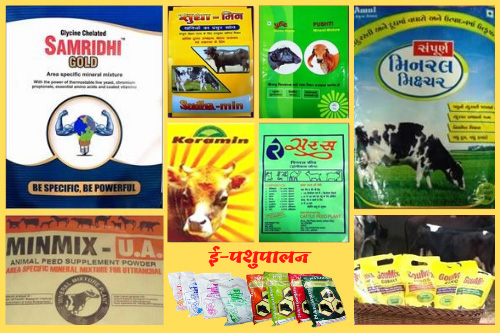
Is commercial ASMM available for Punjab is similar to composition as recommended by NDDB?
ICAR and NDDB have developed ASMM formulations for all states depending upon the requirement. They have suggested a complete formulation of ASMM for Punjab. On the other hand, commercially chelated Samridhi is available as ASMM in Punjab, which contains minerals and vitamins. However, recently it has been slightly modified as glycine chelated “Samridhi Gold”, in which some of the minerals are chelated with glycine along with additional benefits of live yeast, methionine, lysine and niacinamide. A detailed comparison regarding composition of chealted samridhi ASMM has been made with the requirements set up by NDDB for ASMM of Punjab in Table 2.
Table 2: Comparison of Glycine Chelated Samridhi Gold ASMM with the requirements set up by NDDB for ASMM of Punjab
| S. No. | Name of Ingredient | Composition requirement of ASMM for Punjab as suggested by NDDB | Composition (per kg) of commercially available Glycine chelated Samridhi Gold ASMM for Punjab |
| 1. | Calcium | 23.0 % (min.) | 230 gm |
| 2. | Phosphorus | 12.50 % (min.) | 125 gm |
| 3. | Sulphur | 2.2% (min.) – 3.0% (max.) | 22 gm |
| 4. | Copper | 0.15 % (min.) | 1.5 gm |
| 5. | Zinc | 1.40 % (min.) | 14 gm |
| 6. | Cobalt | 0.016 % (min.) | 160 mg |
| 7. | Iodine | 0.026 % (min.) | 260 mg |
| 8. | Fluorine | 0.075 % (max.) | — |
| 9. | Lead | 23 ppm (max.) | — |
| 10. | Arsenic | 8 ppm (max.) | — |
| 11. | Chromium | — | 150 mg |
| 12. | Vitamin A | — | 700000 I.U |
| 13. | Vitamin D3 | — | 70000 I.U |
| 14. | Vitamin E | — | 250 mg |
| 15. | Live Yeast | — | 30 gm (20 × 109 CFU/gm) |
| 16. | DL-Methionine | — | 1000 mg |
| 17. | L-Lysine | — | 1000 mg |
| 18. | Niacinamide | — | 1000 mg |
Perusal of above table reveals that in Punjab, there is deficiency of calcium, phosphorus, copper, zinc and cobalt, whereas iron, magnesium, potassium, manganese and selenium are already in excess. On comparison from above table, we concluded that Glycine Chelated Samridhi Gold fulfills all requirements regarding composition and quality standards as laid down by NDDB. Hence there is an urgent need of feeding ASMM like chelated samridhi to dairy animals in Punjab in order to enhance their productivity and reproductive efficiency.
What is the need of hour?
Today dairy farming is passing through a great period of turbulence. Farmers must be aware about the slogan– “one calf per animal per year” for better economic returns. This can’t be possible without feeding mineral mixture. While advising the feeding of mineral mixture, keeping in mind that there should not be any wastage of a single ingredient, we should prescribe only ASMM relevant to that area. This will not save the money of poor farmers only but will also improve the economy of our country also.
References
- Bhuvaneswari, S.S.B. 2019. Assessment of area specific mineral mixture supplementation: productive and reproductive performance of milch cows: an on farm trial. International Journal of Research and Analytical Reviews. 6(2): 546-549.
- Garg, M.R., Bhanderi, B.M. and Sherasia, P.L. 2007. Area specific mineral mixtures and vitamins in the ration of dairy animals for improved productivity and reproduction efficiency. Indian Dairyman. 59(8): 21-27.
- Ghosh, M.K., Mondal, M., Verma, R.K. and Muwel, N. 2016. Use of area specific mineral mixture to ameliorate region specific reproductive problems in ruminants. Research & Reviews: Journal of Dairy Science and Technology. 5(1): 1-4.
- Gupta, R., Singh, K., Sharma, M. and Kumar, M. 2017. Effect of mineral mixture feeding on the productive and reproductive performance of crossbred cattle. International Journal of Livestock Research. 7(12), 231-236.
- Mohsina, M., Ghuman, S.P.S., Randhawa, S.N.S. and Sushma, C. 2020. Effect of area specific mineral mixture supplementation on reproductive performance in dairy animals of Punjab. Haryana Veterinarian. 59(Special Issue): 105-106.
- Pandey, V.K., Gendley, M.K., Tiwari, S.P. and Sonali, P. 2018. effect of area specific mineral mixture on serum biochemical parameters and milk yield in dairy cattle. International Journal of Agriculture Sciences. 10(1): 4965-4968.
- Sahoo, B., Kumar, R., Garg, A.K., Mohanta, R.K., Agarwal, A. and Sharma, A.K. 2017. Effect of supplementing area specific mineral mixture on productive performance of crossbred cows. Indian Journal of Animal Nutrition. 34(4): 414-419.
- Singh, P. 2020. Myths and facts about dairy farming practices and management. E-Pashupalan. 6(1): 36-42.


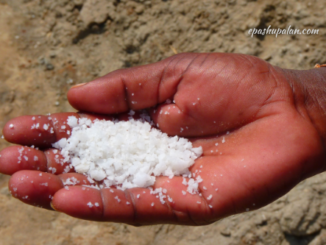
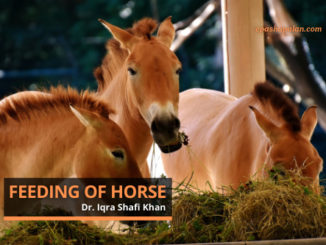
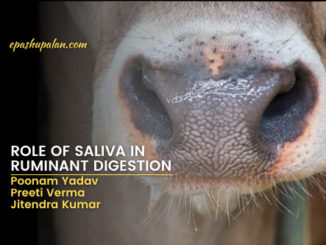

3 Trackbacks / Pingbacks